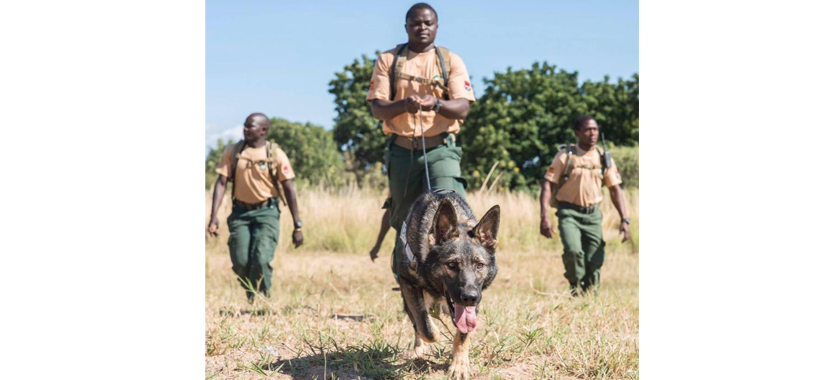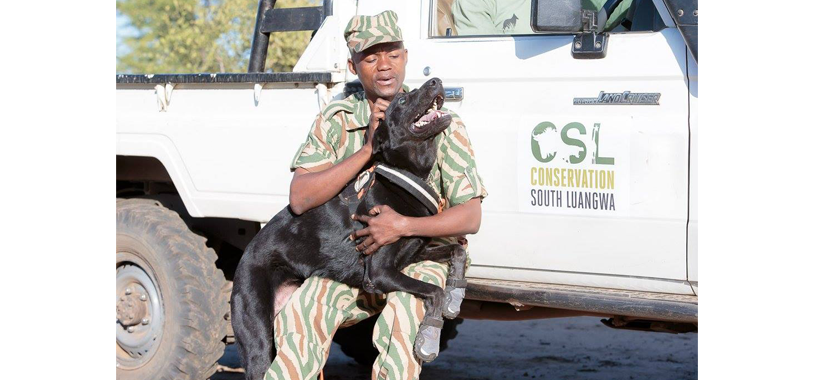Dogs are playing an ever-increasing role in the desperate struggle to curb poaching in Africa in both anti-poaching and anti-trafficking realms. Richard Bonham states “even if the poachers are not ambushed or stopped before the crime, they will almost definitely be caught with dogs after the crime. They cannot get away”.
Traditionally German Shepherds, Belgian Malinois and Weimarana’s are the ideal choice for tracker dogs but Invictus K9 working with the Conservation Lower Zambezi project on their anti-poaching operations have taken in a malnourished six week old village pup to train up to become a tracking dog.
Fury the village pup
“Fury” a tiny puppy from a Zambian village is already a star. Her trainer Zimbabwean-born Jay Crafter is teaching Fury how to identify ivory, weapons and ammunition by smell, devising an exercise where she has to sniff inside several pipes and look for a particular ‘target’. “In each pipe there will be other novel scents such as soap or her treats or elephant dung…teaching her to ignore the distractors and identify the target”, Crafter explains. She is even acquiring impressive language skills, learning commands in Chewa, Dutch and English. Watch the video of her progress after two weeks training.
Local Dogs to the Rescue!
Big Life’s renowned tracking dog unit also has a local dog that is an effective tracker. Their tracker dogs are often called out to support Kenya Wildlife Service operations in National Park’s and other private conservancies. Unlike expensive imports, local dogs although they have no guaranteed resistance from Tryps, a disease caught from tsetse flies, they are for more resistant to it. Unfortunately some highly-trained import dogs in South Luangwa and Ruaha have succumbed to the disease. Crafter told News24 that normally he works with German Shepherds, “a dependable, reliable breed” but Fury is defying all stereotypes and was able to ‘sit’ and ‘lie’ within one week of her training.
Megan Parker the director of research at Working Dogs for Conservation has helped socialize many village puppies, choosing mutts and dogs from working lines such as shepherds, collies and labradors – all breeds that like to work with people. Indeed many village dogs are selected as hunting dogs to help their human counterparts chase down their prey, simply tracking a fresh scent. Megan states “[w]hat nearly all dogs are good at is tracking… All dogs can smell and all dogs have evolved as predators to scent track animals. So having a village dog track a human is not too big a stretch”.
Possibility of a ‘Bush Dog Academy’
‘Fury’s’ rapid development and enthusiasm has got her trainers thinking of the possibility of one day starting a “Bush Dog Academy”, where local dogs like Fury would be trained up for tracking purposes. The Canis africanis breed offers such potential as they are able to sustain the heat and environment and have natural immunities that imports do not. Fury will be a test to see how trainable a breed she is. Although Fury’s future is uncertain, if she does not make it she will work in conservation in some form of another. But Crafter is optimistic and hopes “her to be a bad ass poacher catching puppy!”



